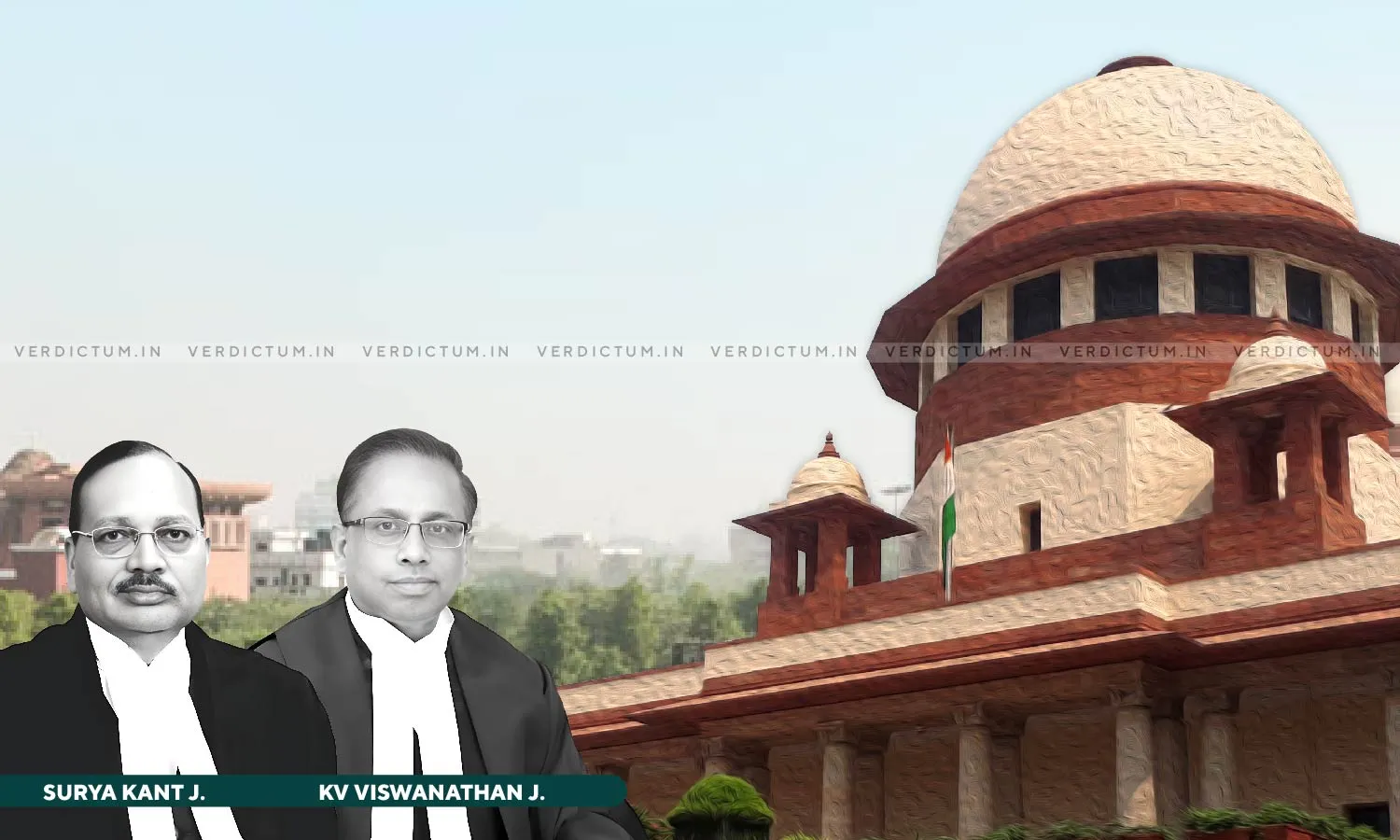In Compulsory Land Acquisition, Owners Entitled To Highest Value From Similar Land In Bona Fide Transactions Near Acquisition Time: Supreme Court
The Supreme Court has reiterated that in compulsory land acquisition, the owner is entitled to the highest value fetched by similar land in the locality in a bona fide transaction between a willing buyer and seller, around the time of acquisition.
The Court set aside the decision of the Punjab and Haryana High Court whereby the appeals by expropriated landowners (appellants) seeking further enhancement in compensation for their acquired lands were dismissed. The Bench restored the compensation amount granted by the Reference Court which enhanced the market value of the acquired land in addition to granting other statutory benefits.
A Bench of Justice Surya Kant and Justice K.V. Viswanathan held, “The Court shall rely on the highest valued exemplars unless the prices fall within a narrow range, in which case calculating an average of the values therein may be more congruous.”
Senior Advocates Narender Hooda, Rameshwar Singh Malik, Gagan Gupta and Sunil Dalal represented the appellants, while ASG Vikramjit Banerjee appeared for the respondents.
The Land Acquisition Collector (LAC), following the notification under Section 4 of the Land Acquisition Act, 1894 (the Act) for the development of residential and utility areas, assessed compensation for the land, which the appellants were not satisfied with.
The appellants sought additional compensation through Reference proceedings under Section 18 of the Act, resulting in an enhanced market value. However, the enhanced compensation was challenged by the State before the High Court, which reverted the compensation to the original amount determined by the LAC.
The process of assessing or affixing compensation, the Supreme Court explained was not tethered to precision but rather aimed at a nuanced estimation of pertinent factors under Section 23(1) of the Act which mandated that, in determining compensation for acquired land, the Court must consider the market value of the land as of the date of publication of the notification under Section 4 of the Act
“The ‘market value’ is to be assessed with reference to factors such as standing crops and trees, the severance of part of the land, damage to movable or immovable property or earnings, the need to relocate one’s residence or business, and any loss of profits from the land between the publication of the declaration under Section 6 and the Collector's assumption of possession,” the Bench explained.
The Court reiterated its decision in Mehrawal Khewaji Trust v. State of Punjab (2012), wherein the Aoex Court held, “It is clear that when there are several exemplars with reference to similar lands, it is the general rule that the highest of the exemplars, if it is satisfied that it is a bona fide transaction, has to be considered and accepted. When the land is being compulsorily taken away from a person, he is entitled to the highest value which similar land in the locality is shown to have fetched in a bona fide transaction entered into between a willing purchaser and a willing seller near about the time of the acquisition.”
The Court explained that even though the High Court rejected the sale exemplar because it was executed after the issuance of the Section 4 notification, it fell prey to the same error and relied upon the Respondents’ sale exemplars, which were also executed after the acquisition had already begun.
Consequently, the Court observed, “We are of the considered opinion that the High Court erred in reducing the valuation of the land and affirming the figures granted by the LAC. As demonstrated by our analysis above, the evaluation conducted by the Reference Court was nearly accurate and aligned with the evidence of the sale deeds and potentiality, despite the fact that the sale exemplar, on which it relied upon, may not have been ideal, given the circumstances and its commercial nature.”
The Court excluded sale deeds from both parties that were not executed in proximity to the notification date, leaving only pre-notification sales for consideration.
Accordingly, the Supreme Court allowed the appeal.
Cause Title: Horrmal (Deceased) through his LRs & Ors. v. State of Haryana & Ors. (Neutral Citation: 2024 INSC 797)
Appearance:
Appellant: Senior Advocates Narender Hooda, Rameshwar Singh Malik, Gagan Gupta and Sunil Dalal; ASG K.M. Nataraj; Advocates Tishampati Sen, Anurag Anand, Pardeep Dahiya, Jitesh Malik, Ajay Gupta, Ashok Anand, Manisha Saroha, Nikhil Beniwal, Raunaq Dalal, R.V.Kameshwaran, Prasanna Kumar Parhi, et al; AOR Ananta Prasad Mishra, Aditya Singh, Rakesh Dahiya, Davesh Bhatia, Nischal Kumar Neeraj, Ajay Kumar Singh, Devesh Pratap Singh, et al
Respondent: ASG Vikramjit Banerjee; Advocates Keshav Mittal, Sabarni Som, Fateh Singh, R.K. Singh and Rajeev Kumar Gupta; AOR Samar Vijay Singh and Parminder Singh Bhullar












